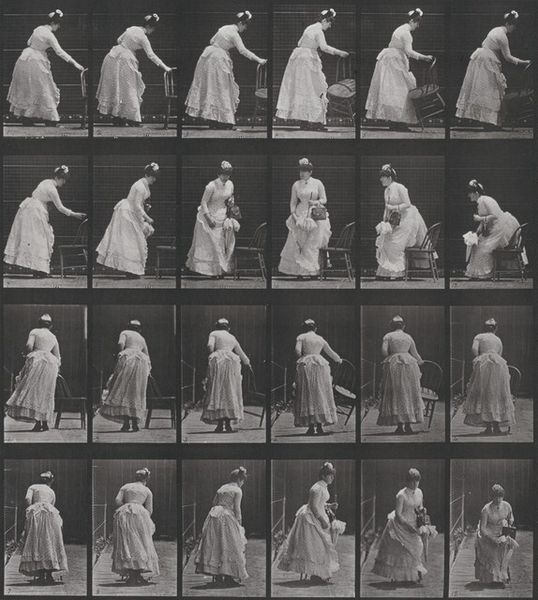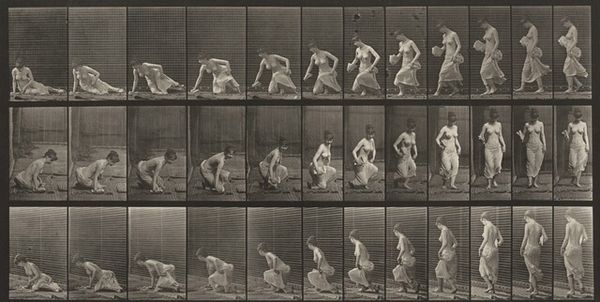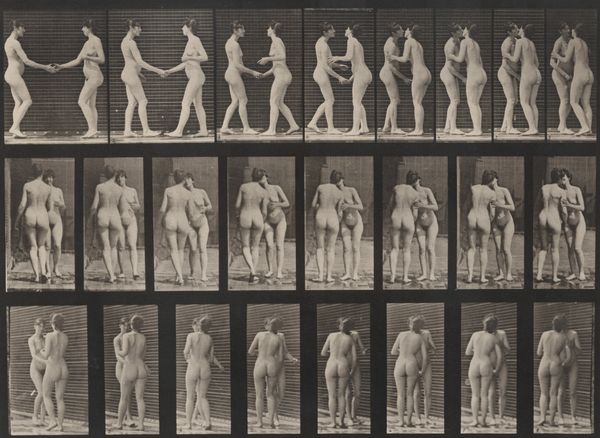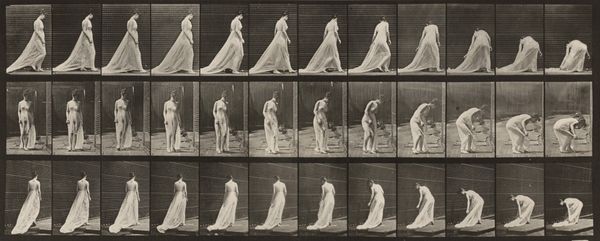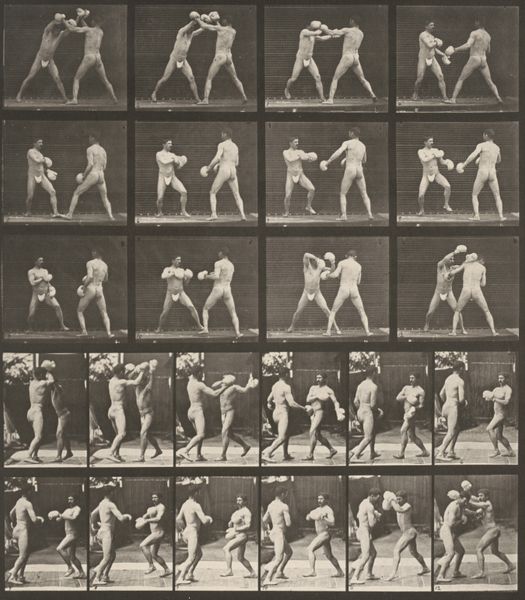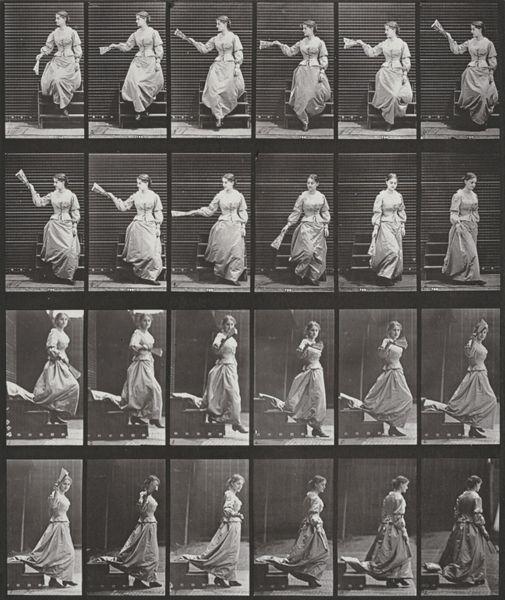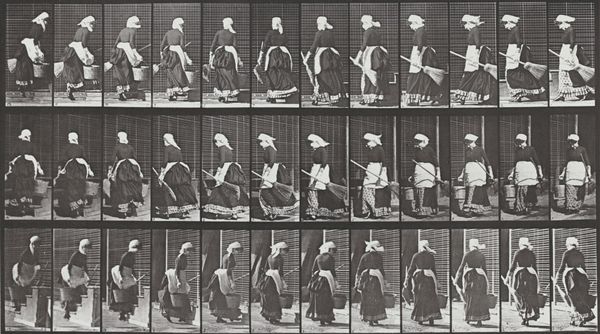
Plate Number 250. Rising from chair, stooping and lifting handkerchief 1887
0:00
0:00
print, photography, gelatin-silver-print
#
portrait
#
pictorialism
# print
#
sculpture
#
figuration
#
photography
#
gelatin-silver-print
Dimensions: image: 28.5 × 25.5 cm (11 1/4 × 10 1/16 in.) sheet: 47.63 × 60.33 cm (18 3/4 × 23 3/4 in.)
Copyright: National Gallery of Art: CC0 1.0
Editor: Here we have Eadweard Muybridge's "Plate Number 250. Rising from chair, stooping and lifting handkerchief," a gelatin-silver print from 1887. I find the grid-like composition fascinating, almost like a scientific study of movement frozen in time. What does this work evoke for you? Curator: Well, considering Muybridge’s context, this wasn’t just an aesthetic exploration but a systematic endeavor rooted in scientific inquiry. He aimed to capture and dissect motion, driven by the era’s burgeoning interest in scientific understanding. Look how the backdrop is neutral. How do you think the choice of presenting a body against that space impacted the interpretation of the artwork in Muybridge's time? Editor: It definitely puts all the emphasis on the figure and the movement itself. I guess it strips away any distractions, allowing the viewer to focus solely on the mechanics of the action. Curator: Precisely! Muybridge's work significantly influenced how we perceive motion in both art and science. This plate, seemingly straightforward, embodies the cultural shift towards empirical observation and photographic truth. It played a crucial role in the later development of cinema. Beyond art, this work entered scientific discourse. We also can't forget the complicated politics embedded in Muybridge's position of power photographing anonymous figures, often presented as evidence of movement. What do you make of that ethical dimension? Editor: That's a sobering thought – the power dynamic involved. I hadn't considered that. The aesthetic beauty of it sort of hid that. Curator: It highlights the importance of considering the social and institutional frameworks that shape artistic production. Reflecting on that tension, where scientific progress meets ethical considerations, adds depth to the work, wouldn't you agree? Editor: Absolutely. I'll definitely view Muybridge's work with a more critical eye now. Thanks for pointing that out!
Comments
No comments
Be the first to comment and join the conversation on the ultimate creative platform.

